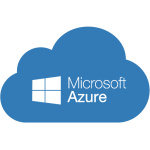About Microsoft Azure SQL Database
Microsoft Azure is a public cloud computing service designed for building, testing, launching, and managing applications and services via Microsoft-managed data centers. Through its platform-as-a-service (PaaS), software-as-a-service (SaaS), and infrastructure-as-a-service (Iaas) offerings, Microsoft Azure integrates with a wide range of programming languages and tools. In addition to working with Microsoft's proprietary software and systems, Azure is compatible with third-party solutions, including Linux. As an extremely popular cloud services platform, many businesses and enterprises have used Microsoft Azure to migrate their computer systems to the cloud and eliminate the costs and staff requirements needed to maintain physical onsite servers.
About Pendo
Pendo is a cloud-based software-as-a-service (SaaS) platform that integrates your application and webpage usage analytics with feedback, guidance, and communication from end-users. The solution empowers you to understand the way customers are using your product, how they feel about it, and what their experiences are like without overburdening your engineering team. Pendo provides your development team with the insights they need to dramatically improve applications, websites, and user experiences. The platform also keeps your customers informed about product enhancements and key developments as you release them.
Popular Use Cases
Bring all your Pendo data to Amazon Redshift
Load your Pendo data to Google BigQuery
ETL all your Pendo data to Snowflake
Move your Pendo data to MySQL
Microsoft Azure SQL Database's End Points
Microsoft Azure Virtual Machines
As one of its IaaS features, Microsoft Azure allows users to deploy virtual machines developed in Windows or Linux.
Microsoft Azure App Services
As one of its PaaS features, Azure App Services allows you to publish and manage websites and web applications.
Microsoft Azure WebApps
WebApps is Microsoft Azure's high-density web hosting service, which allows you to build web applications more efficiently with PHP, Node.Js, or Python, then deploy them on the Azure Cloud.
Microsoft Azure WebJobs
WebJobs gives you the ability to launch applications in the Microsoft App Services space and host them in the cloud.
Microsoft Azure Mobile Engagement Services
Microsoft Azure's mobile engagement service provides real-time tracking, data analytics, and deep insights to better understand user engagement and behavior for your mobile applications.
Microsoft Azure HockeyApp
Microsoft Azure's HockeyApp is a productivity-enhancing driver that helps you design, build, beta test, and distribute mobile apps more efficiently.
Microsoft Azure REST and SDK APIs
Azure's REST and SDK APIs allow you to store and access your application data on Azure's cloud platform.
Microsoft Azure Table Services
Azure Table Services facilitates the storage of data in structured text form so you can access it via a partition and primary key.
Microsoft Azure Blob Service
Blob Service empowers you to store unstructured text information and binary data as 'Blobs' accessible through HTTPS.
Microsoft Azure Queue Service
Queue Service streamlines asynchronous communication across multiple programs.
Microsoft Azure File Service
Azure File Service facilitates cloud data storage via REST API and the SMB Protocol.
Microsoft Azure Search Functionality
Azure's data search functionality supports more efficient data searching with REST and SDK APIs.
Microsoft Azure SQL Data Warehouse
Azure's SQL data warehouse is managed by Microsoft within the Azure Cloud Facility. It offers high-performance querying and enhanced data security.
Microsoft Azure Messaging Service
Azure Service Bus is a messaging service that facilitates communication between the Azure Cloud and applications operating on-site and off-site to build more reliable and scalable applications. The Azure Service Bus supports communication via Event Hubs, Queues, Topics, and Relays.
Microsoft Azure Automation Features
Azure Automation allows users to automate frequently-repeated tasks that they perform in their cloud and enterprise environments to save time and prevent human errors. Automation improves the reliability of common administrative tasks. Azure automation allows you to schedule tasks with runbooks or use Desired State Configuration for the automation of configuration management tasks.
Pendo's End Points
Pendo User Metrics
Pendo includes tools to track metrics on total web traffic, user engagement, session length, per session page views, scrolling behavior, bounce and rates, conversion figures, standard user actions, actions that lead to conversion, and more. Pendo also monitors where your traffic is coming from, how people enter your site, and at which point they leave. Then it presents the data in elegant, easy-to-understand visual reports.
Pendo User Sentiment Surveys
Pendo allows you to deploy NPS and polls directly to users in-application to produce better and more accurate results. You can target specific users based on product interactions or user characteristics to obtain the specific feedback you require. Pendo's user sentiment surveys empower you to combine survey responses with user behavior data to gain a more three-dimensional understanding of your customers. By merging quantitative and qualitative survey data, you'll gain a clearer picture of what pleases and displeases users to reveal actionable opportunities to adjust your products for improved customer conversion, increased retention, and more profitable business results.
Pendo Integrations
Pendo offers built-in ETL (extract, transform, load) connections to integrate with a wide variety of platforms such as Slack, Segment, Fivetran, Fullstory, LaunchDarkley, Google BigQuery, DOMO, Drift, Looker, Amazon Redshift, Salesforce, UserVoice, WordPress, Zapier, Zendesk, and more.
Pendo Product Improvement Roadmapping
Pendo includes tools to coordinate your team around a central planning roadmap informed by the metrics and insights the platform generates. Roadmapping features include the ability to visualize your product development strategy and organize your plans around product enhancements, timeline, team, and market segment. You can also manage which teams can access different views of the plan, and streamline views for stakeholders so they're overload with information. Pendo's drag-and-drop functionality empowers non-tech-savvy users to create and manage roadmaps.








